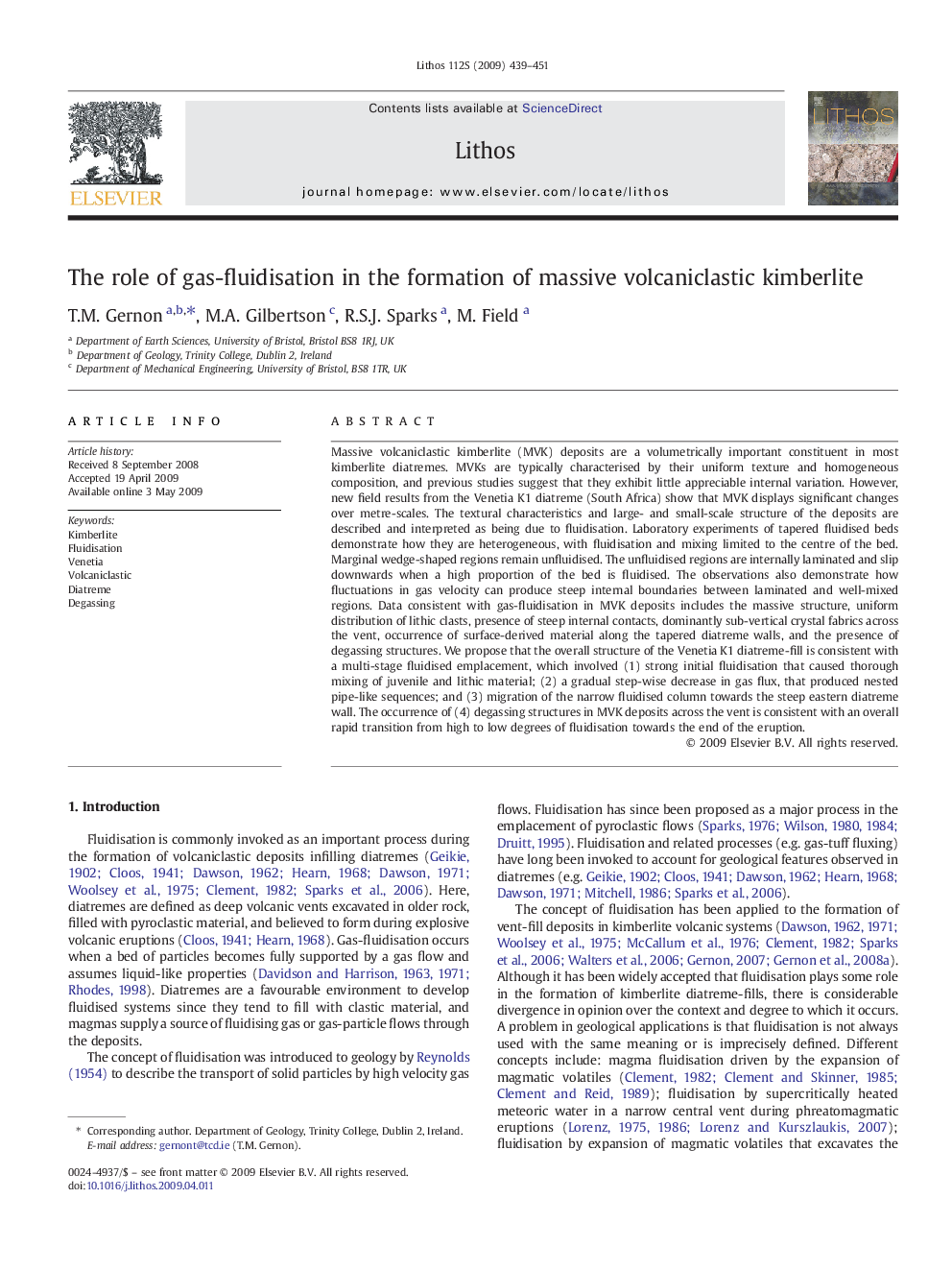| Article ID | Journal | Published Year | Pages | File Type |
|---|---|---|---|---|
| 4717281 | Lithos | 2009 | 13 Pages |
Massive volcaniclastic kimberlite (MVK) deposits are a volumetrically important constituent in most kimberlite diatremes. MVKs are typically characterised by their uniform texture and homogeneous composition, and previous studies suggest that they exhibit little appreciable internal variation. However, new field results from the Venetia K1 diatreme (South Africa) show that MVK displays significant changes over metre-scales. The textural characteristics and large- and small-scale structure of the deposits are described and interpreted as being due to fluidisation. Laboratory experiments of tapered fluidised beds demonstrate how they are heterogeneous, with fluidisation and mixing limited to the centre of the bed. Marginal wedge-shaped regions remain unfluidised. The unfluidised regions are internally laminated and slip downwards when a high proportion of the bed is fluidised. The observations also demonstrate how fluctuations in gas velocity can produce steep internal boundaries between laminated and well-mixed regions. Data consistent with gas-fluidisation in MVK deposits includes the massive structure, uniform distribution of lithic clasts, presence of steep internal contacts, dominantly sub-vertical crystal fabrics across the vent, occurrence of surface-derived material along the tapered diatreme walls, and the presence of degassing structures. We propose that the overall structure of the Venetia K1 diatreme-fill is consistent with a multi-stage fluidised emplacement, which involved (1) strong initial fluidisation that caused thorough mixing of juvenile and lithic material; (2) a gradual step-wise decrease in gas flux, that produced nested pipe-like sequences; and (3) migration of the narrow fluidised column towards the steep eastern diatreme wall. The occurrence of (4) degassing structures in MVK deposits across the vent is consistent with an overall rapid transition from high to low degrees of fluidisation towards the end of the eruption.
